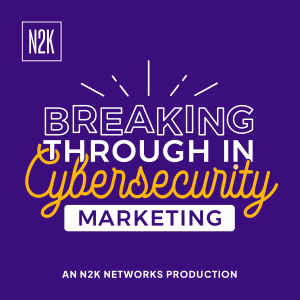
Wednesday Sep 07, 2022
Product-Led Growth as Your Next Marketing Strategy with Ross Haleliuk
Ross Haleliuk, Head of Product at LimaCharlie, joins us to talk about product-led growth (PLG) and its role in cybersecurity and cloud security. Ross leads us through exactly what PLG is and how SAAS companies can implement it into their product or service processes for customer acquisition, revenue growth, retention, and engagement. Whether you’re a small business or a big company, PLG can ensure your customers are happy with your products and fully engaged with your services— without even going through the traditional sales funnel.
Timecoded Guide:
[02:01] Defining product-led growth and how businesses can use it to acquire customers
[08:33] How PLG is different in cybersecurity and customer data
[20:06] Balancing a security risk with ease of installation and integration
[28:21] Understanding metrics, conversions, and the customer retention journey
[35:36] Best hiring practices for PLG companies interested in implementing PLG
What is PLG, and why is everyone talking about it?
PLG stands for “product-led growth.” Product-led growth might just sound like another cybersecurity buzzword, but it’s actually a solid business strategy. PLG positions the product as the main drive for customer acquisition, revenue growth, and retainment. Instead of a sales person or team guiding the customer through their purchasing journey, the product itself is fostering engagement, building relationships with paying customers, and showing them its own value.
“The part that is incredibly important is that a potential customer has the ability to try the product before they start paying for it, before they purchase.”
How does PLG play out in cybersecurity?
Product-led growth can be tricky to implement in a cybersecurity space for a few reasons. The first is that product-led growth requires individual contributors to be empowered to make decisions, try different products, and make suggestions about solutions to problems. This can be difficult to implement in large companies without buy-in from leadership positions. Second, many products in cybersecurity fall under the umbrella of “keeping people safe.” This can be difficult to quantify the specific value of to customers, which is a vital aspect of successful PLG strategies.
“The challenge with those kinds of products is: How do you say if it's working? How do you measure if it's working? If you haven't been breached, is it because nobody tried to do it, [or] is the product so good that it stopped it? Did you just get lucky? It's the value that becomes incredibly hard to measure.”
How is PLG not just giving away a company’s products for free forever?
Implementing a PLG strategy means giving customers a chance to discover the value of your product for themselves, without having to go through a paywall or talk to a sales rep. If customers can immediately see the value of your product, they’re likely to keep using it— and that’s when your sales and/or marketing teams can step in. At the end of the day, PLG doesn’t completely replace a sales team or funnel, but instead makes it easier for your sales team to focus on high-ticket items and customer success.
“If a company has 500 people adopt the product, the freemium version in one of their departments, with only 5 people using it, it means that the sales team can now approach and have a conversation, potentially about expanding the 5 people deployment into the 500 people deployment. The sizing of the opportunities becomes easier.”
How do you measure the value of a PLG strategy in a cyber company?
It can be difficult to measure the value of PLG in a cybersecurity company, but it’s not impossible. What marketers and sales reps need to remember is that there has to be a key event that a customer experiences in order for them to realize the product does what it’s supposed to. For example, if you have an alert set up for someone clicking a link in an email that they’re not supposed to click, that’s a tangible event and alert you can see. That alert shows your customer that the product or software is doing what it’s supposed to do, and therefore illustrates the value of your PLG strategy.
“Building a PLG product requires an incredibly deep knowledge of the customer's needs, motivations, expectations, and everything else that drives the purchasing decisions.”
----------
Links:
Grab your ticket to the Cyber Marketing Con 2022.
Spend some time with our guest Ross Haleliuk on LinkedIn or on his website.
Follow Gianna on LinkedIn.
Catch up with Maria on LinkedIn.
Join the Cybersecurity Marketing Society on our website, and keep up with us on Twitter.
Additional Resources:
No comments yet. Be the first to say something!